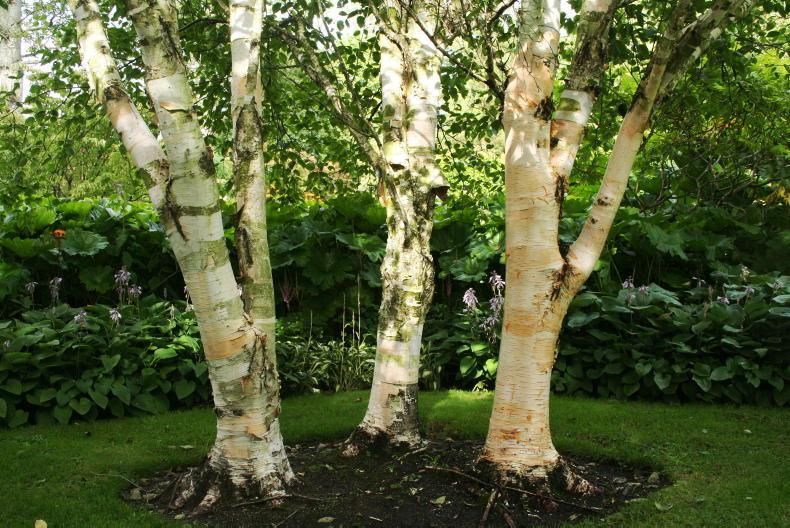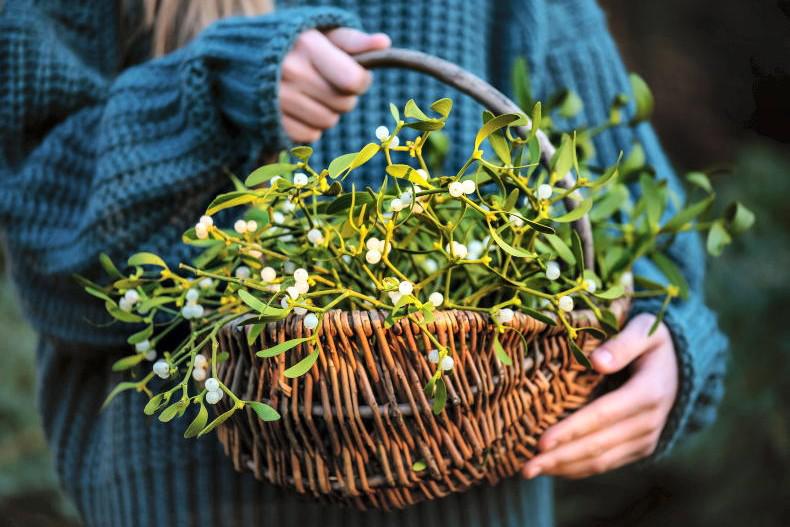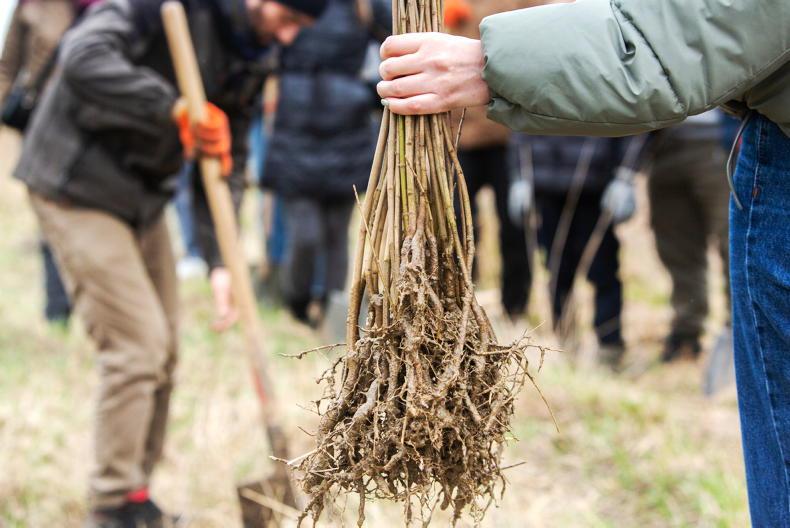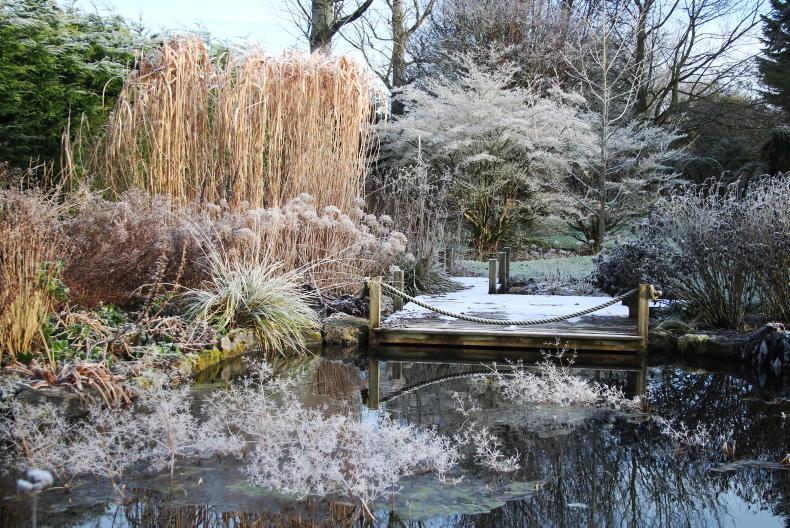One of the pleasures of this time of year is to stroll about the garden without thinking too much about the work there is to be done, just enjoying the soft light, kicking through the crispy leaves underfoot, inhaling the musky odours and embracing the fading glory of autumn.
This year, deciduous trees and shrubs are responding to the unseasonably mild weather in different ways. Some still remain green, others are now networks of bare branches, while the rest are at differing stages of changing colour and dropping leaves.
Although we tend to think of November as a dull and dreary month, the garden still offers flashes of colour and plenty of interest.
Perennials
Floral surprises unfold from late-flowering perennials like Liriope muscari, as its spires of tiny, purple, bead-like flowers, almost like grape hyacinths, push through tufty clumps of grass-like leaves.
This robust evergreen is perfect for growing in dappled shade beneath trees and forms a good ground cover if planted in groups. It makes a lovely pairing with the exotic-looking, arrowhead leaves of Arum italicum ‘Marmoratum’, which have lain dormant all summer, emerging now to charm through winter with their striking patterns of silvery marbling.
Several shrubs are revealing a range of colourful berries that have been quietly ripening all summer and autumn. Among the most eye-catching of these is Callicarpa bodinieri ‘Profusion’ with conspicuous clusters of bright violet berries that will cling to the bare stems well into winter.
This is a self-fertile form of callicarpa, commonly known as beautyberry, but it will produce more berries if planted in small groups of several plants.
On a nearby embankment, the sealing-wax-red berries of Cotoneaster horizontalisare now glowing against the small, flame red leaves all along its fan-like sprays of stiff, herringbone branches.
It makes a good groundcover plant for slopes and banks, or train it as a wall shrub against a low wall.
Keeping leaves cleared is an ongoing task this month, but it’s important to do, especially on lawn areas, as accumulations will block light and air from the grass, which can lead to disease and bare patches forming beneath the cover. The easiest way to deal with leaves on the lawn is to run a mower over them.
Alternatively, rake the leaves off regularly, piling them into mesh bags or compost bins, to rot down and create leaf mulch. You can also put the collected leaves into bin bags, pierced with a couple of holes and tied on top. Well-rotted leaf mulch is a fantastic soil conditioner that can be applied to planted areas or used as compost for seed sowing and potting.
Fallen leaves can be left in-situ on most borders and garden beds without any problem. They can help insulate the ground to protect plant roots from extreme cold and will break down over the winter. By spring, you’ll hardly notice them. As they break down, they’ll return nutrition to the soil.
Clean birch trees
A recent wander through the garden prompted a mental note to clean the trunks of our small grouping of Himalayan birch. Grown for their attractive white stems, their impact can become muted over time, with accumulations of grime and green algae on the trunk and branches.
The remedy is simple – a good, old-fashioned wash, which we try to do at least once a year. Add washing-up liquid to a bucket of warm water and use a soft brush or cloth to wash down the trunks.
The green coating comes off easily and some loose strips of bark may also peel away. The result is a beautifully gleaming bark, that suddenly leaps out from the gloom, providing cheer on a dull winter’s day.
Deciduous hedging, such as beech or hornbeam, can be trimmed back now. The path that links our main garden to a walk along the River Nore is bounded on one side by a lengthy hedge of beech, which has gradually grown upwards and outwards just a little too far. Now is the ideal time to give it a real haircut to restore the line and shape.
This is a particularly good year for autumn colour on beech, with the summer green leaves now turned to rich gold and ochre, gradually becoming infused with russet tones.
When grown as a hedge, the brown leaves are retained through winter.
Plant: Now is the time to start planting bare-root trees, shrubs, hedging and roses.
Trim: Trim back hardy, perennial chrysanthemums down to about 8-10cm after they finish blooming and apply a protective mulch around the root area.
Take: Consider taking root cuttings of suitable herbaceous perennial plants, such as acanthus, romneya, mullein and oriental poppy, to increase your stock.
Water: Regularly water permanently planted outdoor containers if it is dry or windy for a prolonged period.
Label: Check plant labels and rewrite names if fading.
Q&A: How do I establish a good hedge?

Guelder rose, Viburnum opulus.
I would like to establish a native hedge to form a natural-type boundary between my garden and the fields beyond. How do I go about this? – Catherine Doyle, Ennistymon
Plant bare-root plants, about 45-60cm high, during the dormant season. Evergreens, such as holly and privet, establish better as container-grown plants. Plant in a staggered row, with 50cm spacing between the rows and between the plants in the rows.
Depending on your soil and growing conditions, your mix of plants may include hawthorn, native privet, guelder rose, spindle, blackthorn, holly, elder, hazel and dog rose. Weed control is critical in the first three years for successful establishment.
One of the pleasures of this time of year is to stroll about the garden without thinking too much about the work there is to be done, just enjoying the soft light, kicking through the crispy leaves underfoot, inhaling the musky odours and embracing the fading glory of autumn.
This year, deciduous trees and shrubs are responding to the unseasonably mild weather in different ways. Some still remain green, others are now networks of bare branches, while the rest are at differing stages of changing colour and dropping leaves.
Although we tend to think of November as a dull and dreary month, the garden still offers flashes of colour and plenty of interest.
Perennials
Floral surprises unfold from late-flowering perennials like Liriope muscari, as its spires of tiny, purple, bead-like flowers, almost like grape hyacinths, push through tufty clumps of grass-like leaves.
This robust evergreen is perfect for growing in dappled shade beneath trees and forms a good ground cover if planted in groups. It makes a lovely pairing with the exotic-looking, arrowhead leaves of Arum italicum ‘Marmoratum’, which have lain dormant all summer, emerging now to charm through winter with their striking patterns of silvery marbling.
Several shrubs are revealing a range of colourful berries that have been quietly ripening all summer and autumn. Among the most eye-catching of these is Callicarpa bodinieri ‘Profusion’ with conspicuous clusters of bright violet berries that will cling to the bare stems well into winter.
This is a self-fertile form of callicarpa, commonly known as beautyberry, but it will produce more berries if planted in small groups of several plants.
On a nearby embankment, the sealing-wax-red berries of Cotoneaster horizontalisare now glowing against the small, flame red leaves all along its fan-like sprays of stiff, herringbone branches.
It makes a good groundcover plant for slopes and banks, or train it as a wall shrub against a low wall.
Keeping leaves cleared is an ongoing task this month, but it’s important to do, especially on lawn areas, as accumulations will block light and air from the grass, which can lead to disease and bare patches forming beneath the cover. The easiest way to deal with leaves on the lawn is to run a mower over them.
Alternatively, rake the leaves off regularly, piling them into mesh bags or compost bins, to rot down and create leaf mulch. You can also put the collected leaves into bin bags, pierced with a couple of holes and tied on top. Well-rotted leaf mulch is a fantastic soil conditioner that can be applied to planted areas or used as compost for seed sowing and potting.
Fallen leaves can be left in-situ on most borders and garden beds without any problem. They can help insulate the ground to protect plant roots from extreme cold and will break down over the winter. By spring, you’ll hardly notice them. As they break down, they’ll return nutrition to the soil.
Clean birch trees
A recent wander through the garden prompted a mental note to clean the trunks of our small grouping of Himalayan birch. Grown for their attractive white stems, their impact can become muted over time, with accumulations of grime and green algae on the trunk and branches.
The remedy is simple – a good, old-fashioned wash, which we try to do at least once a year. Add washing-up liquid to a bucket of warm water and use a soft brush or cloth to wash down the trunks.
The green coating comes off easily and some loose strips of bark may also peel away. The result is a beautifully gleaming bark, that suddenly leaps out from the gloom, providing cheer on a dull winter’s day.
Deciduous hedging, such as beech or hornbeam, can be trimmed back now. The path that links our main garden to a walk along the River Nore is bounded on one side by a lengthy hedge of beech, which has gradually grown upwards and outwards just a little too far. Now is the ideal time to give it a real haircut to restore the line and shape.
This is a particularly good year for autumn colour on beech, with the summer green leaves now turned to rich gold and ochre, gradually becoming infused with russet tones.
When grown as a hedge, the brown leaves are retained through winter.
Plant: Now is the time to start planting bare-root trees, shrubs, hedging and roses.
Trim: Trim back hardy, perennial chrysanthemums down to about 8-10cm after they finish blooming and apply a protective mulch around the root area.
Take: Consider taking root cuttings of suitable herbaceous perennial plants, such as acanthus, romneya, mullein and oriental poppy, to increase your stock.
Water: Regularly water permanently planted outdoor containers if it is dry or windy for a prolonged period.
Label: Check plant labels and rewrite names if fading.
Q&A: How do I establish a good hedge?

Guelder rose, Viburnum opulus.
I would like to establish a native hedge to form a natural-type boundary between my garden and the fields beyond. How do I go about this? – Catherine Doyle, Ennistymon
Plant bare-root plants, about 45-60cm high, during the dormant season. Evergreens, such as holly and privet, establish better as container-grown plants. Plant in a staggered row, with 50cm spacing between the rows and between the plants in the rows.
Depending on your soil and growing conditions, your mix of plants may include hawthorn, native privet, guelder rose, spindle, blackthorn, holly, elder, hazel and dog rose. Weed control is critical in the first three years for successful establishment.










SHARING OPTIONS